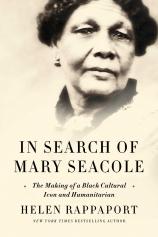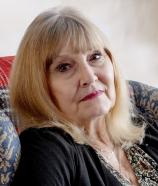In Search of Mary Seacole: The Making of a Black Cultural Icon and Humanitarian
Review
In Search of Mary Seacole: The Making of a Black Cultural Icon and Humanitarian
Biographer Helen Rappaport has brought to new life the dynamic, daring, caregiving Mary Seacole, whose memory was for many years forgotten, in this remarkable look at history, racial issues, medical treatment and women’s liberation.
Seacole was born in Jamaica in 1805 to a local woman, Rebecca Grant, and a Scottish father serving in the British military. Grant ran a boarding house and practiced her healing skills based on traditional herbal remedies. Both these skill sets were inherited by Seacole. She married a British merchant who may have wanted her for her nursing abilities, as he was an invalid whose passing invoked her wanderlust. She journeyed on her own to Panama, where her brother operated a boarding house, and she learned even more about standard medical practice from his patrons.
"Biographer Helen Rappaport has brought to new life the dynamic, daring, caregiving Mary Seacole, whose memory was for many years forgotten, in this remarkable look at history, racial issues, medical treatment and women’s liberation."
Perhaps most significantly, though, Seacole began to develop various poultices that often had a positive effect on those suffering from the plague of cholera. In Panama, meeting Americans and encountering the “n” word for the first time, and during a later stay in England, she gained perspective about the way that people of darker skin tones might be treated by whites in the wider world.
When the Crimean War was in its early stages, Seacole applied through official channels to use her nursing skills there. Turned down in nearly every instance, almost certainly due to her race, she simply did what she generally did when faced with resistance and went there on her own. She opened a little boarding facility for the sick and wounded, and treated soldiers not only with her naturopathic remedies but also with good humor, warm drinks and home-baked sweets, earning from her patients the well-meant sobriquet “The Good Samaritan of the Crimea.”
Recognition of Seacole’s positive, folk-based approach to healing and the many lives she may have saved with her self-devised techniques has caused some controversy. Some see it as unfairly supplanting Florence Nightingale’s place as a founder of modern nursing. But Seacole gradually has been given her fair due in England and elsewhere, and doubtless will garner further acclaim thanks to Rappaport’s vivid portrayal.
The author of such works as THE LAST DAYS OF THE ROMANOVS and CAUGHT IN THE REVOLUTION, Rappaport has applied her researching talents to introduce us to and broaden our understanding of Seacole. Though she composed her own short but lively autobiography after the Crimean War, Seacole remained largely unknown until recently. Not only has Rappaport tirelessly ferreted out many obscure facts about Seacole and her family and associates, she also discovered, purchased and displays in this work a painting made of her heroine that now hangs in the National Portrait Gallery.
Mary Seacole was, as Rappaport asserts, “a self-starting, self-supporting woman in a white man’s world.” Her story, which still holds mysteries that Rappaport eventually hopes to uncover, offers a new generation “the face of Everywoman.”
Reviewed by Barbara Bamberger Scott on September 10, 2022
In Search of Mary Seacole: The Making of a Black Cultural Icon and Humanitarian
- Publication Date: September 6, 2022
- Genres: Biography, History, Nonfiction
- Hardcover: 416 pages
- Publisher: Pegasus Books
- ISBN-10: 1639362746
- ISBN-13: 9781639362745




